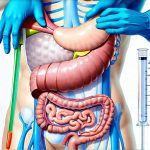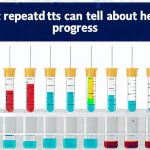Surgery is a significant physiological event, placing considerable stress on the body. The immediate post-operative period often brings challenges beyond pain management, with nausea being one of the most common and debilitating complaints. Successfully navigating this phase isn’t merely about tolerating discomfort; it’s fundamentally linked to recovery speed, nutritional uptake, and overall well-being. A thoughtful approach to eating – focusing on easily digestible foods, timing meals strategically, and understanding individual tolerances – can profoundly impact a patient’s ability to heal effectively and regain strength.
Post-operative nausea isn’t always directly related to the surgery itself. Anesthesia, pain medication (especially opioids), emotional stress, and even dehydration can all contribute significantly. The digestive system often takes time to “wake up” after anesthesia, leading to reduced motility and increased susceptibility to discomfort. Therefore, a gradual return to eating, prioritizing gentle nourishment over ambitious meal plans, is crucial. This article will delve into practical strategies for minimizing nausea and supporting optimal healing through informed dietary choices and mindful eating practices post-surgery.
Understanding Post-Operative Nausea & Its Management
Nausea after surgery isn’t simply an inconvenience; it signals a disruption in the body’s delicate equilibrium. The gut-brain axis plays a key role here – the bidirectional communication between the digestive system and the brain. Surgery, anesthesia, and pain medications can all interfere with this communication, triggering nausea and vomiting centers within the brain. Identifying the potential causes is the first step towards effective management. – Opioid pain medication is a frequent culprit, known for its side effects that include nausea. – Anesthesia itself can disrupt gastrointestinal motility for hours or even days after surgery. – Anxiety and stress surrounding the procedure and recovery can also exacerbate feelings of nausea.
Managing post-operative nausea often involves a multi-faceted approach. This doesn’t just mean dietary changes, although those are central to this discussion. Your surgical team may prescribe antiemetics – medications specifically designed to combat nausea and vomiting – but these should ideally be used in conjunction with, not as a replacement for, good nutritional strategies. Staying adequately hydrated is paramount; dehydration can worsen nausea and impede healing. Small, frequent sips of clear fluids are generally better tolerated than large volumes at once. Ultimately, the goal is to gently reintroduce food while minimizing gastrointestinal distress. Understanding hydration strategies can be a game changer during this time.
A key aspect often overlooked is individual tolerance. What works well for one person may not work for another. Pay close attention to your body’s signals and adjust your diet accordingly. Don’t hesitate to communicate with your healthcare team about any concerns or persistent nausea, as they can provide personalized recommendations based on your specific surgery and medical history. They might also be able to adjust medication if necessary. You might find relief through step-by-step strategies for managing nausea.
The BRAT Diet & Beyond: Initial Food Choices
The BRAT diet – Bananas, Rice, Applesauce, Toast – has long been a go-to recommendation for easing digestive upset, and it can indeed be a good starting point post-surgery. These foods are bland, low in fiber, and easy to digest, minimizing the burden on a sensitive gastrointestinal system. However, relying solely on the BRAT diet for an extended period isn’t ideal as it lacks sufficient nutrients. It’s best viewed as a temporary stepping stone. – Bananas provide potassium, which can be lost through vomiting or diarrhea. – Rice (white rice is preferable initially) offers easily digestible carbohydrates for energy. – Applesauce provides pectin, a soluble fiber that can help soothe the digestive tract. – Toast (plain white toast) is gentle on the stomach and provides some carbohydrate support.
Gradually expanding beyond the BRAT diet should be guided by your tolerance. As you feel able to keep fluids down without nausea, introduce other easily digestible options: clear broths (chicken or vegetable), plain yogurt (if dairy is tolerated), crackers, and cooked cereals like oatmeal. Avoid foods that are high in fat, spicy, heavily seasoned, or acidic as these can trigger nausea and exacerbate discomfort. Remember, slow and steady is the key. Don’t rush to reintroduce your normal diet immediately; listen to what your body is telling you. Considering herbal treatments like ginger or peppermint could also provide relief.
Hydration Strategies for Enhanced Recovery
Hydration isn’t just about preventing dehydration; it’s integral to nearly every aspect of recovery. Adequate fluid intake supports circulation, nutrient absorption, and waste removal – all essential processes during healing. Post-surgery, the risk of dehydration increases due to reduced oral intake (from nausea or appetite suppression) and potential fluid losses from vomiting or diarrhea. – Sip on water frequently throughout the day, even if you don’t feel thirsty. Aim for small amounts every 15-20 minutes rather than large gulps. – Electrolyte-rich beverages (such as diluted sports drinks or oral rehydration solutions) can help replenish lost minerals and maintain fluid balance. However, be mindful of sugar content. – Avoid sugary sodas, caffeinated beverages, and alcohol, as these can exacerbate dehydration or interfere with medication effectiveness.
If you find it difficult to keep water down, try ice chips or popsicles. Ginger ale (flat) or peppermint tea may also offer some relief from nausea while contributing to hydration. A helpful trick is to suck on a few ice chips between bites of food – this can help settle the stomach and make eating more tolerable. Pay attention to your urine color: pale yellow indicates adequate hydration, while dark yellow suggests you need to increase fluid intake. Effective ways to manage nausea can significantly improve your recovery.
Preventing & Addressing Food-Related Nausea
Proactive steps can significantly reduce the likelihood of post-operative nausea related to food choices. – Eat small, frequent meals rather than three large ones. This prevents overwhelming the digestive system. – Chew your food thoroughly. Proper chewing aids digestion and reduces the workload on the stomach. – Avoid lying down immediately after eating. Allow some time for gravity to assist with digestion. – Identify and avoid trigger foods. These vary from person to person, but common culprits include fatty foods, spicy foods, strong smells, and highly processed items.
If nausea does occur despite these precautions, don’t panic. Stop eating immediately and rest. Try sipping on clear fluids or sucking on ginger candies. Deep breathing exercises can also help calm the stomach and reduce feelings of nausea. If the nausea persists or worsens, contact your healthcare provider. They may be able to adjust your medication or provide further guidance. Remember that nausea is a normal part of recovery for many people, but it shouldn’t be ignored or suffered in silence. You can also learn how to structure meals to minimize discomfort.
It’s important to remember this information serves as general guidance and should not replace the advice of your healthcare team. Each individual’s post-operative journey is unique, and personalized recommendations are essential for optimal healing and well-being. Considering probiotics could also support your gut health during recovery.


















